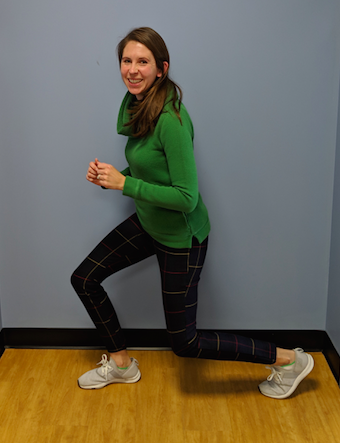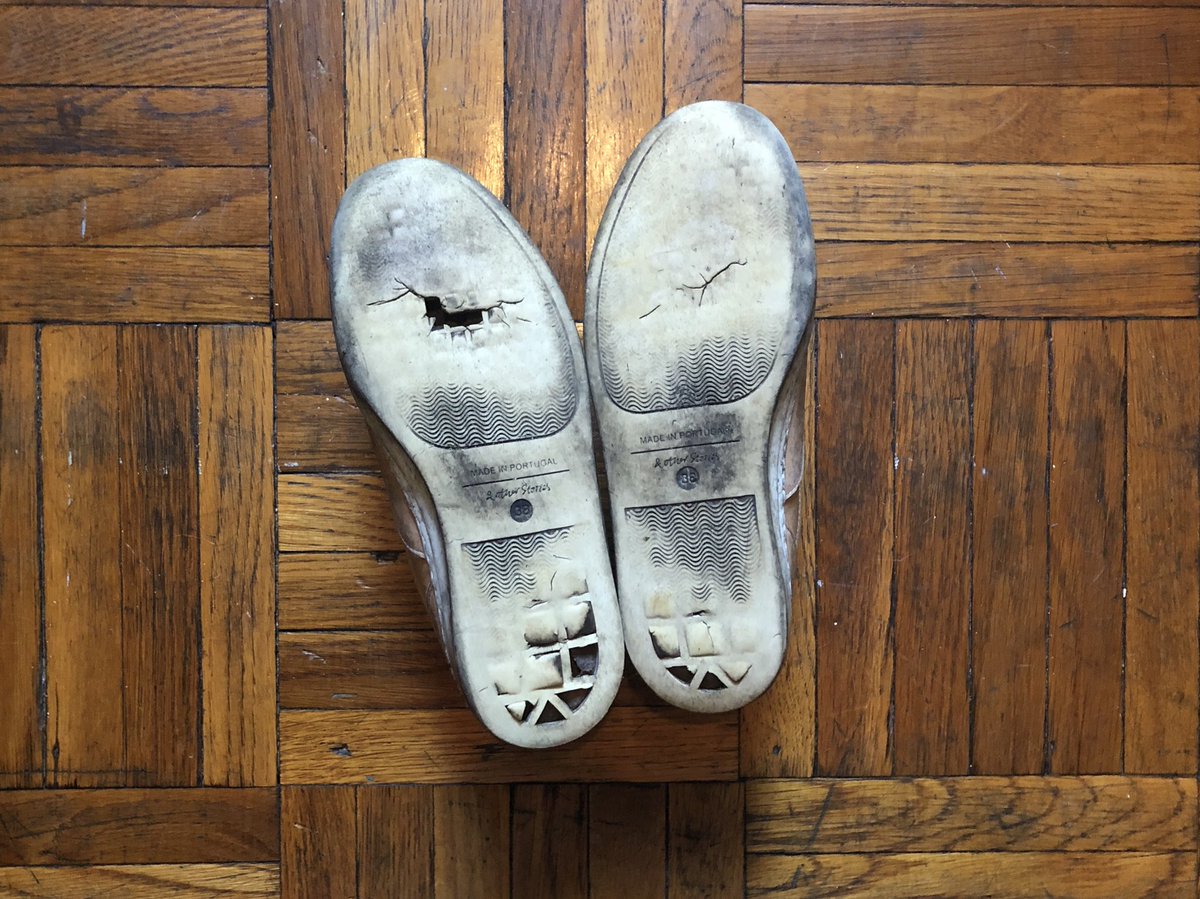I go through fashion stages. I’m not talking slouch socks, pegged pants, bell bottoms or some of those other notable, parodied fashion trends. I’m talking about two personal fashion stages that cycle more quickly: 1) trying to dress professionally and 2) giving up on dressing professionally.
The past summer involved more work meetings than usual. My traditional summer wardrobe (free t-shirt paired with shorts) was inadequate. So I bought some new dresses. I felt great in them. Professional. Mature. Polished. I could sit in them for an hour or two, get through a meeting, and feel like I belonged. ‘No imposter here,’ my dresses projected to the world.
But remember that a two-hour meeting isn’t a typical work day. And you try on clothes in a fitting room or in your home mirror–where you’re standing up. It would be more productive to try work clothes on and sit in an office chair. Or stand at a desk. Or try to create something. Or move about a classroom, hurdling over laptop cords and squeezing between desks. #parkourteaching
Earlier this fall, I sat down to work in my quiet office after delivering a presentation to admitted students. The dress I had worn felt fine during the presentation. Yet, despite ideal writing conditions (motivation, peace, some sunshine), I could not work. I was uncomfortable. My dress fabric began to feel stiff and scratchy. The fall air chilled me. It was only after throwing on an old sweatshirt that I was able to harness the writing momentum.
I have always hated heels and what they stand for, hobbling women, making us slow moving, giving us chronic pain. My first semester at Merrimack, I taught in heels a lot–and three toes went numb. My podiatrist told me it was a neuroma, and that it would only get worse and require surgery. Well, I stopped wearing heels over 2 inches and any shoes (sneakers or dress) that had a tight toe box. The elliptical machine also aggravated the neuroma, so I stopped that too. The neuroma went away.
Shoes are an easy villain, but I hadn’t thought of other professional fashion staples as oppressive until this fall. Accessing my brain to write or grade or read something complex is nearly impossible when I am uncomfortable. The bateau neckline of one dress actually made my shoulders hurt for two days after I wore it. That one will remain in the closet.
Google searches, a Facebook post, and some textile trial and error helped me move forward to fashion stage 1.5: professional, comfortable dress.
Friends made excellent suggestions for brands, sites, and stores to peruse, including Loft, Everlane, Betabrand, Boden, and Uniqlo. I am not endorsing these companies, but I wanted to put those suggestions out there for anyone else seeking different clothing options.
I gave Everlane a try because I liked their styles and prices. New clothing I’ve bought has met several criteria: stretchy, soft, and warm. In general, loads of brands carry items that are comfortable and items that are not; it just takes a bit of sorting through–trying on, reading reviews–to figure out what works.
The outfit below–Gap pants, New Balance sneakers, and J. Crew sweater–was comfortable and soft, plus it passed the lunge test (definitely stretchy).
Dress shoes are still a problem. I have other orthopedic problems, including a leg length difference, that get exacerbated when I’m not in sneakers. In heels, I will rarely use my standing desk. Excessive sitting leads to more pain, which leads to less exercise, more sitting, more pain. Boo, hiss.
In fashion stage 1.5, I’ve been wearing comfortable, low-heeled boots or sneakers like the ones you see above (clean and low-profile, unlike my dirty and clunky running shoes). Friends have recommended Cole Haan, Merrell, Croc, and Dansko brands, so now I’m on the lookout for some shoe sales.
Are my ‘nice’ sneakers very professional? Not so much. But do male colleagues often wear sneakers with no compunction? Indeed. This Larry Wilmore podcast episode with Jill Soloway really stuck with me about how maintaining a professional, gendered appearance impacts our productivity.
A few additional questions to put this post into proper context:
Is it a privilege to be able to buy any new clothes, comfortable or uncomfortable? Absolutely.
Are there many more serious problems in the world than uncomfortable women’s fashion? Absolutely.
But do we need comfortable, unfettered, productive women to help address those problems? Absolutely.





